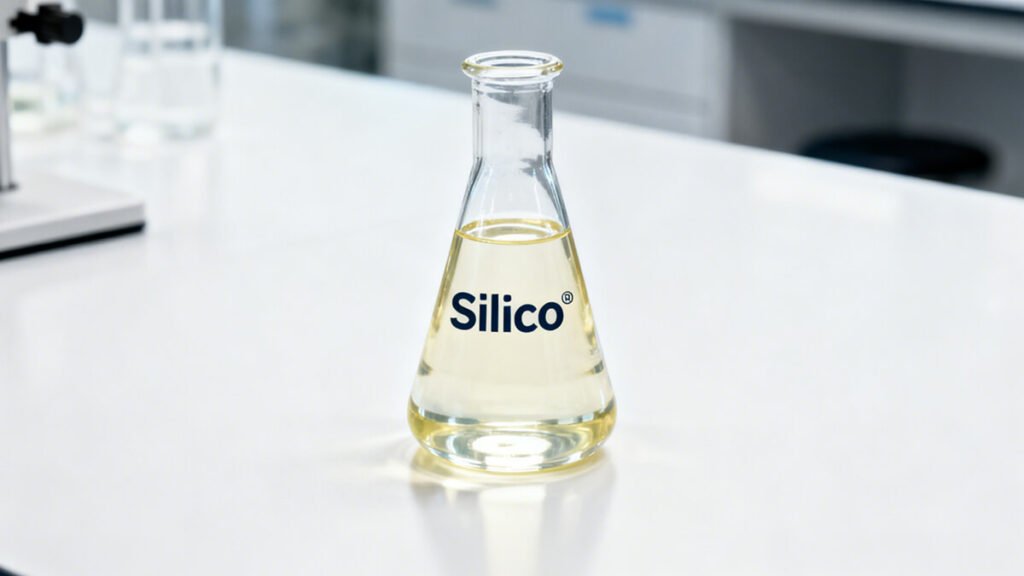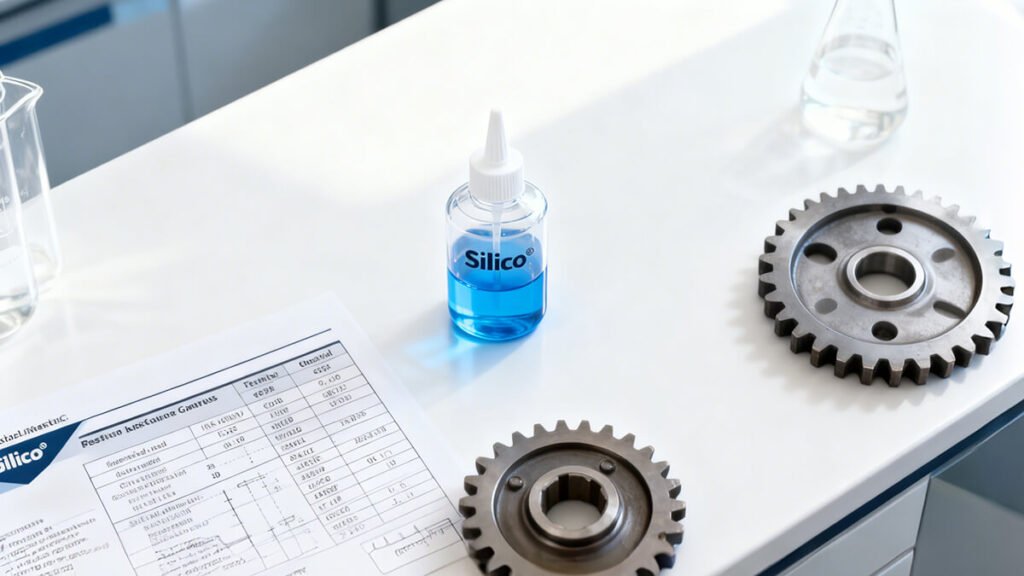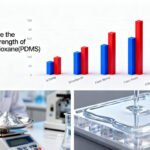How to Choose Textile Silicone Fluids for Fabric Finishing
- Blog
- April 27, 2023
- 3:27 pm
Silicone fluids (also known as silicone oils) — mainly polydimethylsiloxane (PDMS) and its modified derivatives — are widely used in hydraulic and damping applications due to their excellent viscosity stability, broad temperature range, chemical inertness, and outstanding thermal oxidation resistance.
In applications such as automotive components, precision instruments, consumer electronics, and aerospace systems, silicone fluids deliver consistent damping force, excellent low-temperature start-up, extended service life, and superior seal compatibility.
Table of Contents
- 1. Key Physical and Engineering Parameters (Five Core Criteria)
- 2. Viscosity and Temperature — The Core Logic of Damping Performance
- 3. Shear Stability, Viscosity Index, and Aging Resistance
- 4. Compatibility with Seals, Plastics, and Metals
- 5.Air Entrainment, Gas Solubility, and Damping Consistency
- 6. Contamination Control, Filtration, and Maintenance
- 7. Typical Grades and Application Examples
- 8. Procurement and Validation (Recommended Test Matrix)
- 9. Quick Selection Checklist
1. Key Physical and Engineering Parameters (Five Core Criteria)
When selecting silicone fluids for hydraulic or damping devices, the following five key performance indicators should be prioritized (in order of importance):
- Viscosity and temperature dependence — determines damping torque and flow behavior.
- Operating temperature range — defines fluid performance under extreme conditions.
- Shear stability and viscosity retention — affects long-term damping consistency.
- Compatibility with sealing materials and metals — prevents swelling, hardening, or leakage.
- Air release and foaming tendency — ensures stable damping performance under cyclic motion.
Other supporting factors include viscosity index, vapor pressure, dielectric constant, and safety certifications (e.g., food-grade or medical-grade silicone fluids).


2. Viscosity and Temperature — The Core Logic of Damping Performance
Role of Viscosity: Viscosity (measured in cSt) directly determines the damping resistance or flow rate in the system. Higher viscosity increases damping torque, while lower viscosity improves responsiveness.
Temperature Sensitivity: Although silicone fluids exhibit relatively low viscosity change with temperature, it is essential to review the viscosity–temperature (VT) curve.
For low-temperature environments (below −40°C), use low-viscosity methyl or ethyl-modified silicone fluids.
For high-temperature applications (>150°C), select phenyl-modified or high-temperature-stable grades.
Engineering Tip: If no recommended viscosity is available, choose a grade based on the midpoint of the operating temperature range, then verify through bench or prototype testing.
3. Shear Stability, Viscosity Index, and Aging Resistance
Prolonged high-shear or cyclic operation may cause viscosity degradation in certain silicone fluids, especially those with low-molecular-weight fractions.
Key parameters to evaluate include:
Shear stability testing (ASTM D5621 or equivalent)
Thermal aging and volatility evaluation using TGA or accelerated aging methods
Viscosity retention ratio after endurance or cycle testing
Phenyl-modified and high molecular weight silicone fluids offer superior oxidation and thermal stability, ideal for long-term high-temperature operation.
4. Compatibility with Seals, Plastics, and Metals
Silicone fluids are generally compatible with most metals and engineering plastics (e.g., POM, PA, PC) but may cause slight swelling or hardening in some elastomers, such as NBR or CR.
Recommendations:
- Perform compatibility tests (70°C × 168h immersion) during material validation.
- Choose silicone fluids certified for specific seal types (FKM, VMQ, EPDM, etc.).
- Request compatibility reports or test data based on DIN/ASTM standards from suppliers.
5. Air Entrainment, Gas Solubility, and Damping Consistency
Microbubbles and dissolved gases can significantly affect damping curves, especially under impact or reciprocating motion.
To minimize air entrainment:
- Apply vacuum degassing or preheating before filling.
- Avoid rapid stirring or pressure filling during assembly.
- Select low-gas-solubility silicone fluids formulated for damping systems.
Research indicates that degassed silicone fluids can reduce damping fluctuation by over 30% under dynamic load conditions.
6. Contamination Control, Filtration, and Maintenance
- Particle Contamination: Use 5–25 µm filtration depending on system valve clearance.
- Moisture and impurities: Although silicone fluids are hydrophobic, water or surfactant contamination may cause emulsification or foaming.
- Routine Monitoring: Check viscosity, density, water content, impurities, color, and acid value.
-
Maintenance Schedule:
- Compare viscosity before and after operation.
- Conduct a full oil analysis every 6–12 months (or 3–6 months for intensive-duty applications).


7. Typical Grades and Application Examples
| Application Field | Common Viscosity Range (cSt) | Key Characteristics |
|---|---|---|
| RC / Hobby Dampers | 10–1000 | Excellent low-temp fluidity and quick response |
| Industrial Rotary Dampers | 100–1,000,000 | Adjustable torque and long-term reliability |
| Automotive Accessories | 500–100,000 | High thermal stability and low volatility |
| Precision Instruments | 100–10,000 | Stable viscosity and low-noise operation |
8. Procurement and Validation (Recommended Test Matrix)
| Test Item | Purpose | Recommended Standard |
|---|---|---|
| Viscosity–Temperature Curve | Verify viscosity stability | ASTM D445 |
| Shear Stability | Evaluate long-term performance | ASTM D5621 |
| Foam and Air Release | Confirm damping uniformity | ASTM D892 |
| Material Compatibility | Validate seal integrity | ASTM D471 |
| Volatility / Thermal Weight Loss | Assess aging resistance | TGA / DIN 51581 |
9. Quick Selection Checklist
| Operating Condition | Recommended Silicone Fluid Type |
|---|---|
| Below −40°C | Low-viscosity methyl/ethyl-modified silicone fluids |
| Above +120°C | Phenyl-modified or high-molecular-weight fluids |
| High-shear or cyclic systems | High shear-stable silicone fluids |
| Sensitive sealing materials | Conduct compatibility testing first |
| Long-term damping stability | Degassed, low-volatility silicone fluids |
10. Frequently Asked Questions (FAQ)
A: No. Silicone fluids differ significantly in viscosity–temperature characteristics, lubrication mechanism, and material compatibility. Validation testing is required before substitution.
A: Not necessarily. Excessive viscosity may slow system response and increase thermal sensitivity. The best viscosity is one that maintains stable damping within the intended temperature range.
A: Use vacuum filling, slow injection, or thermal degassing, and ensure all filling operations are performed in a clean, moisture-free environment.
Popular Recommendations
Get a Catalog & Best Price
- Quick and helpful reply within 24 hours;
- Tailored solutions provided for your project;
- One-stop purchasing service.
TRENDING
Silico® ORGANOSILICON
- Address: Daiyue Industrial Area, Taian, Shandong, China



